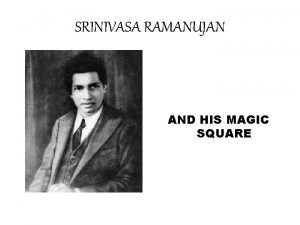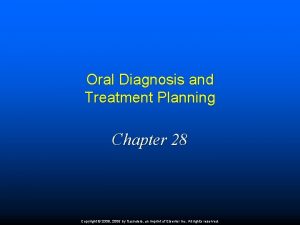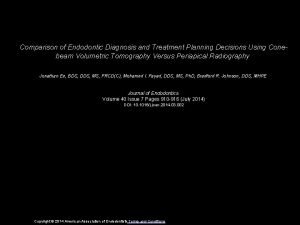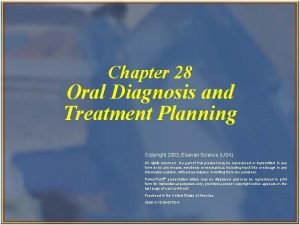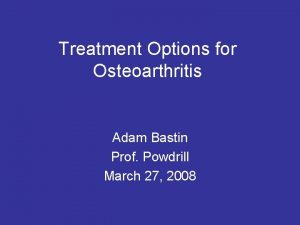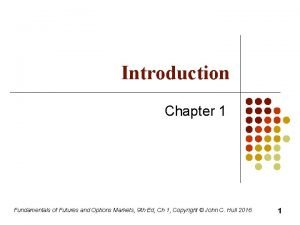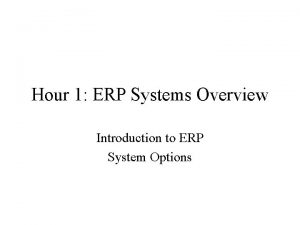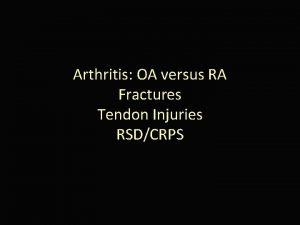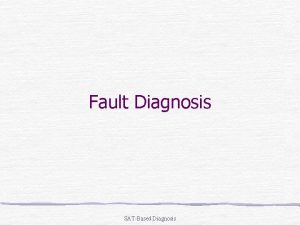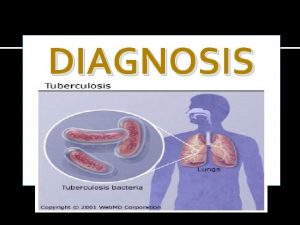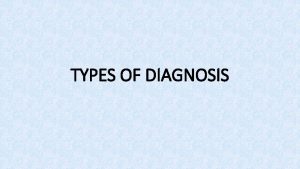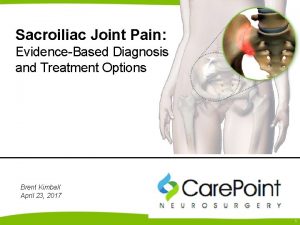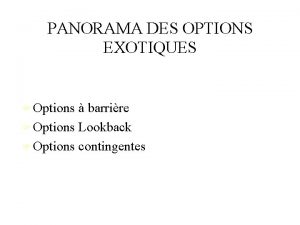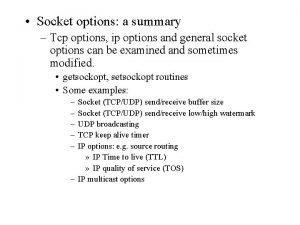Diagnosis and Treatment Options of RSDCRPS Srinivasa N




























- Slides: 28

Diagnosis and Treatment Options of RSD/CRPS Srinivasa N. Raja, MD Director of Pain Research Johns Hopkins University School of Medicine

Introduction RSD/CRPS is a chronic neurologic syndrome characterized by pain of varying intensity Early diagnosis and appropriate treatment are essential to avoid disabling pain RSD/CRPS is often under-diagnosed and under-treated by the medical community

What Is Reflex Sympathetic Dystrophy Syndrome? Reflex sympathetic dystrophy syndrome (RSD) is a debilitating neurologic syndrome characterized by • • Pain and hypersensitivity Vasomotor skin changes Functional impairment Various degrees of trophic change RSD generally follows a musculoskeletal trauma Bogduk N. Current Opinions in Anesthesiology. 2000; 14: 541 -546.

Challenges Natural course and pathophysiology remain elusive 1 Diagnosis made by exclusion of other causes 2 Therapies remain controversial 3 Underdiagnosed and undertreated Significant morbidity and loss of quality of life 1. Jänig W. In: Harden , Baron Janig, eds. Complex regional Pain Syndrome, Progress in Pain Research and Management. 2001: 3 -15. 2. Bogduk N. Current Opinions in Anesthesiology. 2000; 14: 541 -546. 3. Raja SN et al. Anesthesiology. 2002; 96: 1254 -1260.

Terminology: RSD vs CRPS RSD = traditional term Complex regional pain syndrome (CRPS) = more comprehensive term • Includes disorders not related to sympathetic nervous system dysfunction CRPS I = RSD CRPS II = causalgia (involves nerve injury) Galer BS et al. In: Loeser, ed. Bonica’s Management of Pain. 2001: 388 -411.

Name Change to CRPS Goals: standardized, reliable diagnostic criteria and decision rules • Allow generalization • Make appropriate treatment selection • Identify reproducible research samples Galer BS et al. In: Loeser, ed. Bonica’s Management of Pain. 2001: 388 -411.

Epidemiology Age – common in younger adults • Mean 41. 8 years • Mean age at time of injury 37. 7 years Mean duration of symptoms before pain center evaluation = 30 months 2. 3 to 3 times more frequent in females than males 1 Usually involves a single limb in the early stage 2 1. Raja SN et al. Anesthesiology. 2002; 96: 1254 -1260. 2. Galer BS et al. In: Loeser, ed. Bonica’s Management of Pain. 2001, 388 -411.

Clinical Features Presence of an initiating noxious event or a cause of immobilization Continuing pain • Allodynia: pain from a stimulus that does not normally provoke pain • Hyperalgesia: excessive sensitivity to pain Pain disproportionate to any inciting event Stanton-Hicks M et al. Pain. 1995; 63: 127 -133. Galer BS et al. In: Loeser, ed. Bonica’s Management of Pain. 2001; 388 -411.

Clinical Features (cont’d) History of edema, changes in skin blood flow, or abnormal sweating in the region of pain Exclusion of medical conditions that would otherwise account for the degree of pain and dysfunction Stanton-Hicks M et al. Pain. 1995; 63: 127 -133. Galer BS et al. In: Loeser, ed. Bonica’s Management of Pain. 2001: 388 -411.

Checklist for the Diagnosis of RSD: History • Burning pain • Skin, sensitivity to touch • Skin, sensitivity to cold • Abnormal swelling • Abnormal hair growth • Abnormal nail growth • Abnormal sweating • Abnormal skin color changes • Abnormal skin temperature changes • Limited movement Bogduk N. Current Opinions in Anesthesiology. 2000; 14: 541 -546.

Checklist for the Diagnosis of RSD/CRPS: Examination • Mechanical allodynia • Hyperalgia to single pinprick • Summation to multiple pinprick • Cold allodynia • Abnormal swelling • Abnormal hair growth • Abnormal skin color changes • Abnormal skin temperature (> or < C) • Limited range of movement • Motor neglect Bogduk N. Current Opinions in Anesthesiology. 2000; 14: 541 -546.

Revised Diagnostic Criteria Clinical Presentation Pain and sensory changes disproportionate to the injury in magnitude or duration Patients should have at least one symptom in each of these categories and one sign in 2 or more categories § Sensory (hyperesthesia = increased sensitivity to a sensory stimulation) § Vasomotor (temperature or skin abnormalities) § Sudomotor (edema or sweating abnormalities) § Motor (decreased range of movement, weakness, tremor, or neglect) 1. Bruehl et al. Pain. 1999; 81: 147 -154. 2. Harden et al. Pain. 1999; 83: 211219.

Swelling and Color Changes

Abnormal Sweating in RSD

Differential Diagnoses • Diabetic and smallfiber peripheral neuropathies • Entrapment neuropathies • Thoracic outlet syndrome • Discogenic disease • Deep vein thrombosis • Cellulitis • Vascular insufficiency • Lymphedema • Erythromelalgia Raja SN et al. Anesthesiology. 2002; 96: 1254 -1260.

Psychological Aspects Pain cause symptoms of psychologic distress including • • Anxiety Depression Fear Anger Raja SN et al. Anesthesiology. 2002; 96: 1254 -1260.

Treatment Goals • Rehabilitation • Pain management • Psychological treatment Multidisciplinary • Physiotherapy • Medical • Psychological Stanton-Hicks M et al. Pain Practice. 2002; 2: 1 -16.

Rehabilitation: Clinical Pathway Physiotherapy + pain management + psychological therapies = sequential progression through the rehabilitation pathway PT + OT crucial to patient’s progression • Therapist assesses patient’s motivation and helps set goals • Adequate analgesia, encouragement, and education of disease process Stanton-Hicks M et al. Pain Practice. 2002; 2: 1 -16.

Rehabilitation: General Steps Desensitization of the affected region Mobilization, edema control, and isometric strengthening Stress loading, isotonic strengthening, range of motion, postural normalization and aerobic conditioning Vocational and functional rehabilitation Stanton-Hicks M et al. Clin J Pain. 1998; 14: 155 -166.

Pharmacalogic Pain Management Most drugs used for neuropathic pain are used to treat RSD/CRPS • IV alendronate (bisphonate) • Topic dimethyl sulfoxide • Topical clonidine • • • IV bretylium IV ketanserin IV phentolamine IV lidocaine Intranasal calcitonin Raja SN et al. Anesthesiology. 2002; 96: 1254 -1260. Kingery WS. Pain. 1997; 73: 123 -139

Minimally Invasive Therapies Sympathetic, IV regional, and somatic nerve blocks Patients with a sympathetic component to their pain (SMP) should receive nerve blocks For patients without SMP, a somatic block or epidural infusion may be indicated to optimize analgesia for PT Stanton-Hicks M et al. Pain Practice. 2002; 2: 1 -16.

More Invasive Therapies Neuroaugmentation Spinal cord stimulation Intrathecal drug delivery Stanton-Hicks M et al. Pain Practice. 2002; 2: 1 -16.

Surgical Therapies: Sympathectomy • Controversial procedure • In carefully selected patients, may result in reduction in pain severity and disability • Patients with SMP who respond to selectivesympathetic blockade • Radiofrequency and neurolytic techniques are alternatives to a surgical sympathectomy Stanton-Hicks M et al. Pain Practice. 2002; 2: 1 -16. Bandyk DF et al. J Vasc Surg. 2002; 35: 269 -277.

Other Therapies • Behavioral modification • Psychiatric consultation • Complimentary and Alternative therapies Acupuncture Raja SN et al. Anesthesiology. 2002; 96: 1254 -1260.

Prognosis Difficult to predict Earlier intervention may be more likely to be successful Some patients experience reduced symptoms or apparently full recovery Some patients continue to experience significant disability Raja SN et al. Anesthesiology. 2002; 96: 1254 -1260.

Conclusions RSD/CRPS is a chronic neurologic syndrome Not all patients have the same set of symptoms Early diagnosis and appropriate treatment is essential Ideal treatment should be multidisciplinary

Bibliography Bandyk DF, Johnson BL, Kirkpatrick AF, Novotney ML, Back MR, Schmacht DC. Surgical sympathectomy for reflex sympathetic dystrophy syndromes. J Vasc Surg. 2002; 35: 269 -277. Bogduk N. Complex regional pain syndrome. Current Opinions in Anesthesiology. 2000; 14: 541 -546. Bruehl SP, Harden RN, Galer BS, et al. External validation of IASP diagnostic criteria for complex regional pain syndrome and proposed research diagnostic criteria. Internal Association for the Study of Pain. 1999; 81: 147 -154. Galer BS, Schwartz L, Allen RJ. In: Loeser, ed. Bonica’s Management of Pain. 2001: 388 -411. Harden RN, Bruehl SP, Galer BS, et al. Complex regional pain syndrome: are the IASP diagnostic criteria valid and sufficiently comprehensive? Pain. 1999; 83: 211219.

Bibliography (continued) Jänig W. CRPS-I and CRPS-II: A strategic view, In: Harden , Baron Jänig, eds. Complex regional Pain Syndrome, Progress in Pain Research and Management. 2001: 3 -15. Kingery WS. Pain. A critical review of controlled clinical trials for peripheral neuropathic pain and complex regional pain syndromes. 1997; 73: 123 -139. Raja SN , Grabow TS. Complex regional pain syndrome I (Reflex Sympathetic Dystrophy) Anesthesiology. 2002; 96: 1254 -1260. Stanton-Hicks M, Burton AW, Bruehl SP, et al. An updated interdisciplinary clinical pathway for CRPS: Report of an expert panel. Pain Practice. 2002; 2: 1 -16. Stanton-Hicks M, Jänig W, Hassenbusch S, et al. Reflex sympathetic dystrophy: changing concepts and taxonomy. Pain. 1995; 63: 127 -133 Stanton-Hicks M, Baron R, Boas R, et al. Complex Regional Pain Syndrome: guidelines for therapy. Clin J Pain. 1998; 14: 155 -166.
 Magic square ramanujan
Magic square ramanujan Ranga ramanuja maha desikan
Ranga ramanuja maha desikan S r srinivasa varadhan
S r srinivasa varadhan Types of nursing diagnosis
Types of nursing diagnosis Medical diagnosis and nursing diagnosis difference
Medical diagnosis and nursing diagnosis difference Types of nursing diagnosis
Types of nursing diagnosis Nursing process and critical thinking
Nursing process and critical thinking Charting exercise chapter 28
Charting exercise chapter 28 Ridge parallelism
Ridge parallelism Endodontic diagnosis and treatment planning
Endodontic diagnosis and treatment planning Oral diagnosis and treatment planning ppt
Oral diagnosis and treatment planning ppt Fallahs
Fallahs Http://opn.to/a/qmyfg
Http://opn.to/a/qmyfg Treatment options
Treatment options Treatment options
Treatment options Treatment options
Treatment options Perbedaan diagnosis gizi dan diagnosis medis
Perbedaan diagnosis gizi dan diagnosis medis Systems analysis and design in an age of options pdf
Systems analysis and design in an age of options pdf Erp system options and selection methods
Erp system options and selection methods Paragraphs to read
Paragraphs to read Options futures and risk management
Options futures and risk management Options futures and other derivatives
Options futures and other derivatives Introduction to futures and options
Introduction to futures and options Traders in financial futures
Traders in financial futures Currency futures
Currency futures Put call parity formula
Put call parity formula Hedging strategies using futures and options
Hedging strategies using futures and options Erp system options and selection methods
Erp system options and selection methods Power brake system
Power brake system
